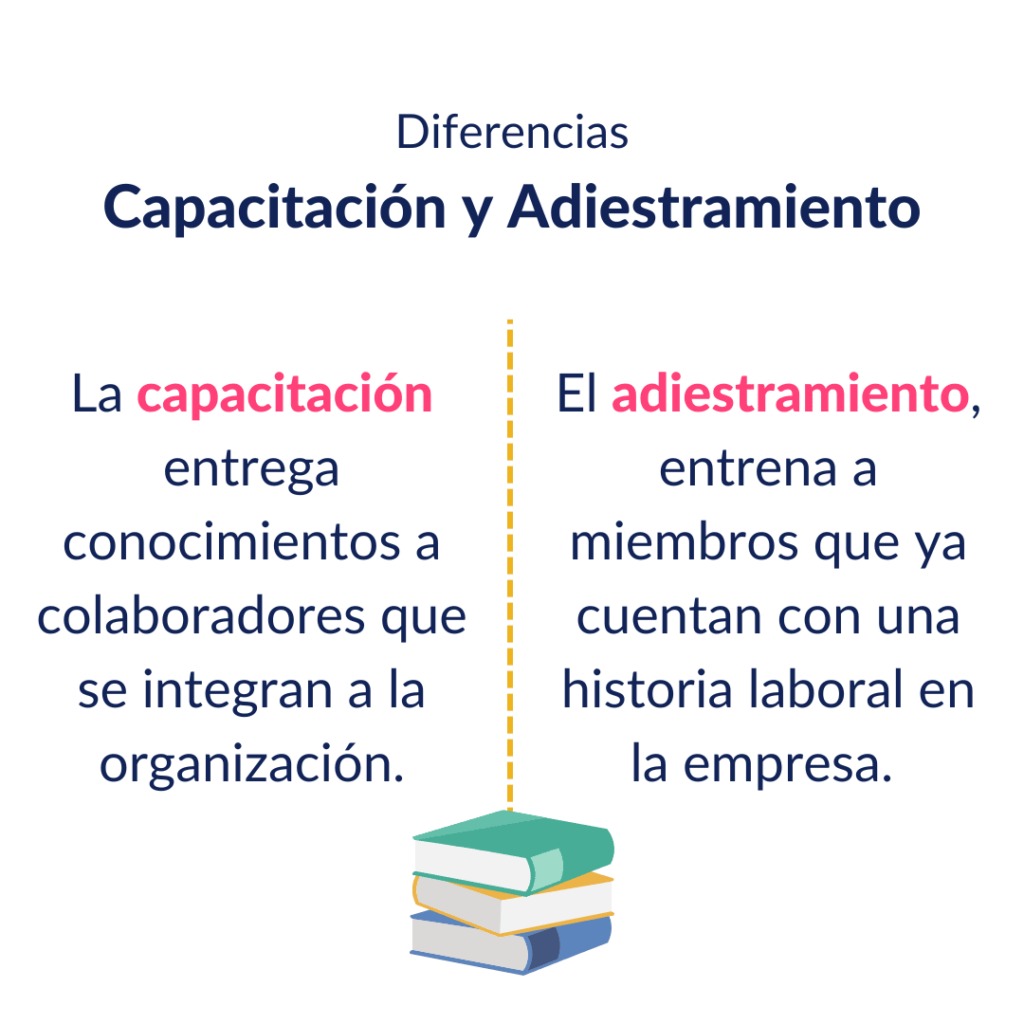All about Training and Training: Differences, Importance and the Federal Labor Law

Training and training are highly necessary processes in an organization. These will be responsible for keeping the workforce updated and prepared to face the challenges of tomorrow. These actions not only provide positive aspects such as greater productivity or effectiveness in organizations. Training and training are also of great value for the professional development of each professional.
However, there has always been confusion between both terms: Are they synonyms? Are they applied in the same way? What are their differences? Check the following article to know all the details about it:
What is the difference between training and coaching?
To refer to the difference between training and training we will review what the Federal Labor Law or LFT. This Law establishes the obligation of employers to provide training to their collaborators. In it, specifically in Chapter III Bis “Productivity, Training and Training of Workers”, it is explained that training:
“It will aim to prepare newly hired workers and others interested in filling vacancies or newly created positions.”
Article 153-B, Federal Labor Law Chapter III BIS.
That is to say, Training provides tools and skills to collaborators who are joining the organization. Something different from training, which according to the same law in Article 153-C, aims to:
- Update and perfect the knowledge and skills of workers so that they can apply new technologies in their activities.
- Communicate to workers the risks and dangers to which they are exposed during the performance of their work.
- Increase productivity.
- Improve the educational level, job competence and skills of workers.
With this, we can conclude that The main difference between training and coaching lies in the person to be trained.. In the case of training, knowledge is provided to people who join the organization. While Training provides knowledge to members who already have a work history to deepen their skills.

However, is it enough to consider this difference for the Federal Labor Law to recognize a training or training process? The answer is no, but peace of mind. Below we will review what your requirements are.
Requirements of the Federal Labor Law on Training and Training
The Federal Labor Law or LFT is clear. It indicates that It is an employer's obligation to train or train company employees, in addition to other important aspects. However, today we are going to refer to the requirements that both collaborators and employers must meet for these processes to be recognized before the Ministry of Labor and Social Welfare.
Federal Labor Law: Requirements for employers
As we mentioned, there are requirements to comply with what is indicated in the Federal Labor Law regarding training and training. These seek to define the framework in which a process of this type can or cannot be executed. To be in order with it, you must:
- Carry out training with an authorized institution and registered with the Ministry of Labor and Social Security.
- Ensure that the delivery is during working hours, unless necessary due to the nature of the work.
Federal Labor Law: Requirements for workers
Just as employers have duties to fulfill, so do the company's collaborators. These are:
- Attend activities punctually of training or training.
- Comply with the instructions given within the framework of training or training.
- Take evaluation exams of knowledge that is required.
What are the benefits of training and training?
Having said the above, what are the benefits of carrying out a training or training process? Let's get to the facts: The truth is that Training and training have the objectives of increasing competitiveness in an organization. However, its benefits are not only for the company, since it also bears fruit at an individual level. Among them:
- Your collaborators will be able to optimize their time.
- Workers will update their individual knowledge.
- They will eliminate the so-called “labor obsolescence.”
- They will have more tools for an eventual new work challenge.
Now, you have all the necessary knowledge to encourage you to encourage your collaborators. Do you dare to start? A starting point that we recommend is to start with the annual planning of a training plan.